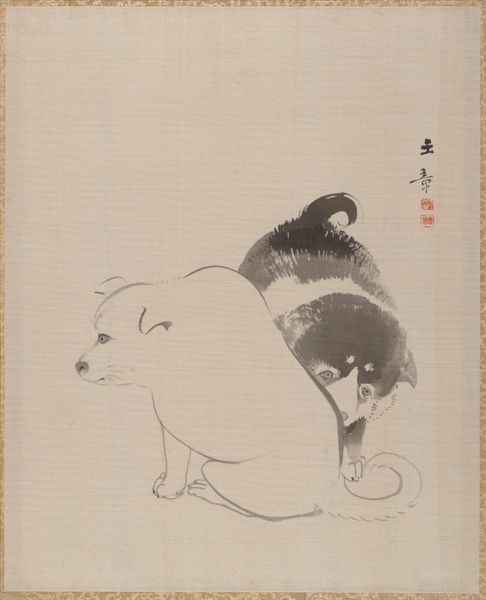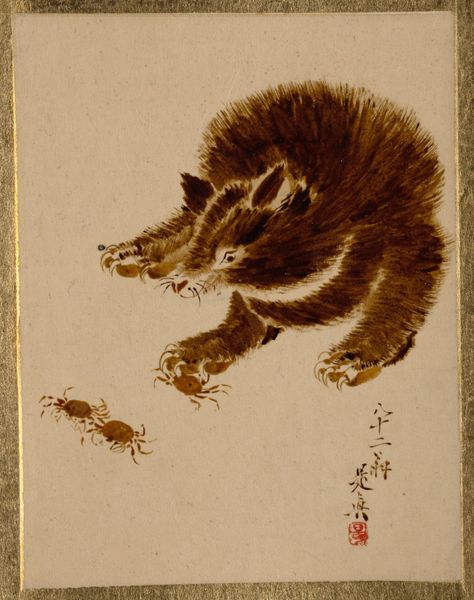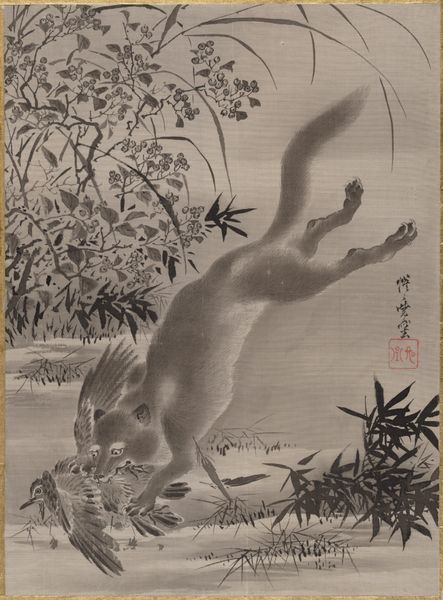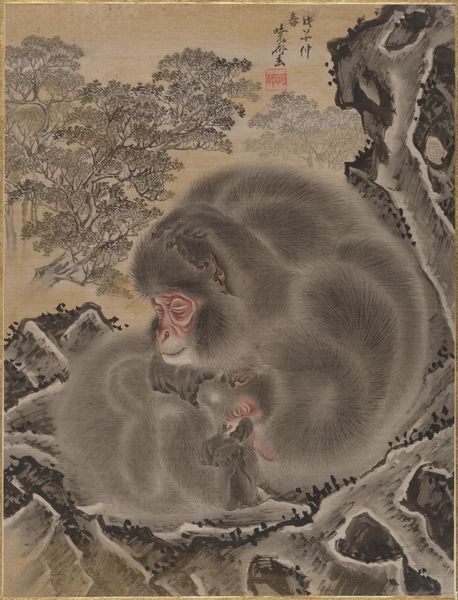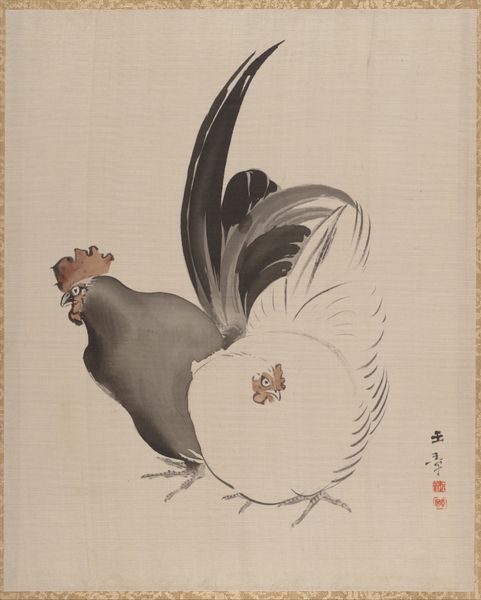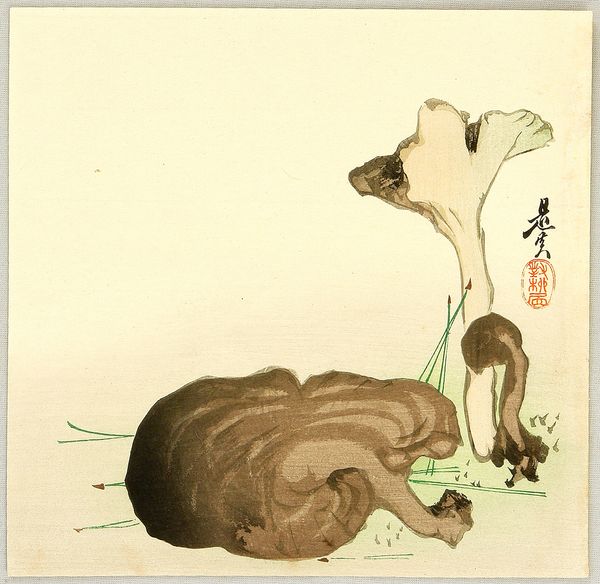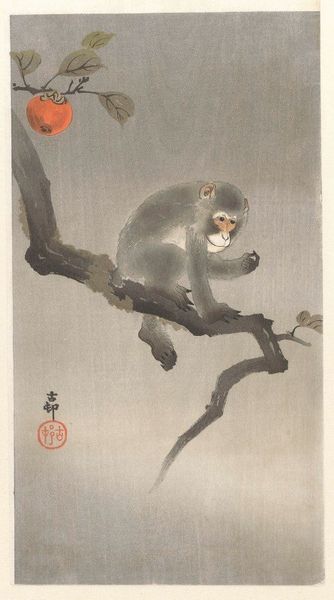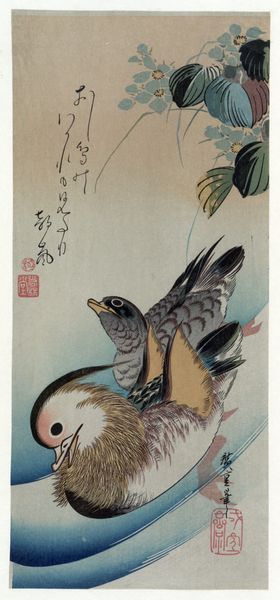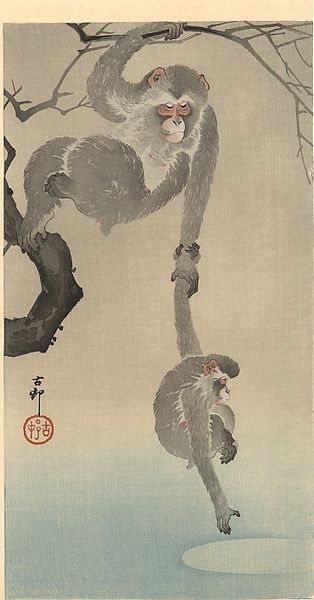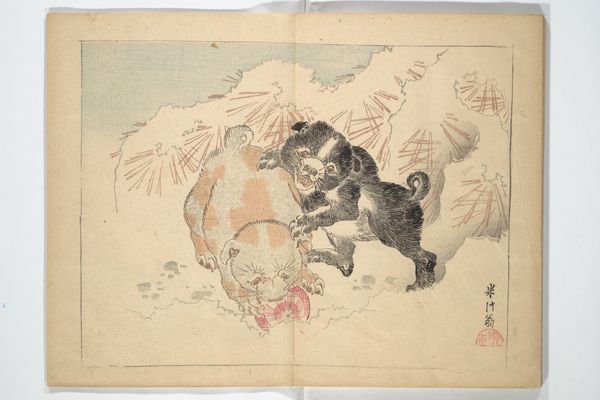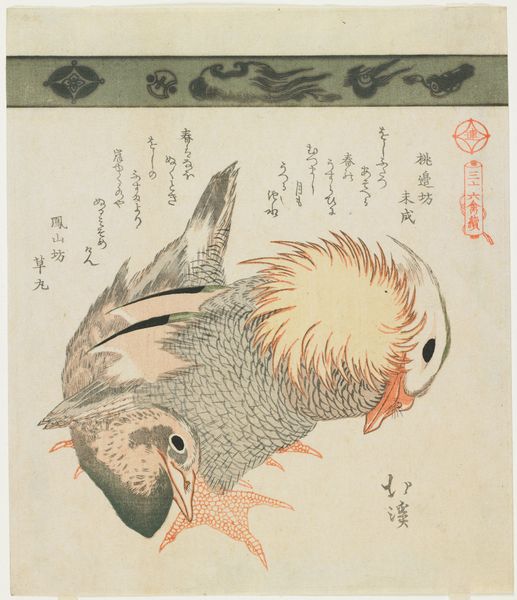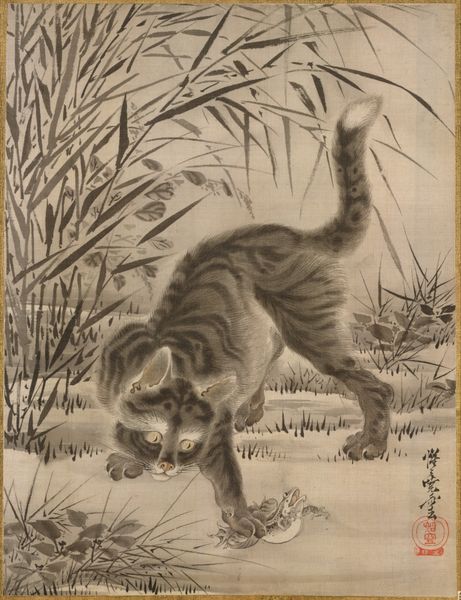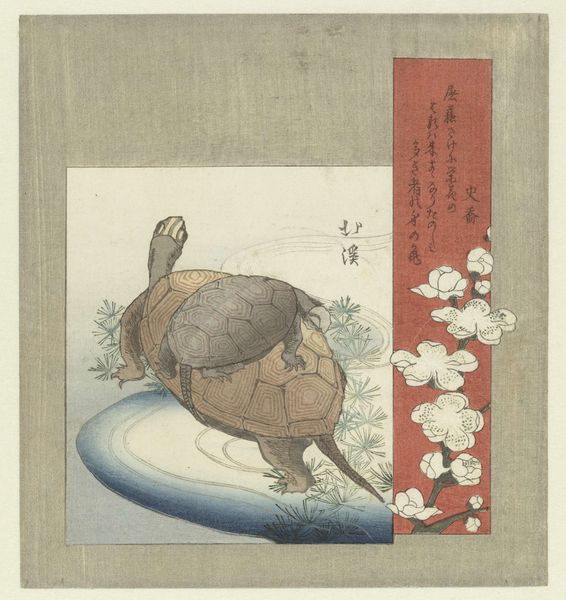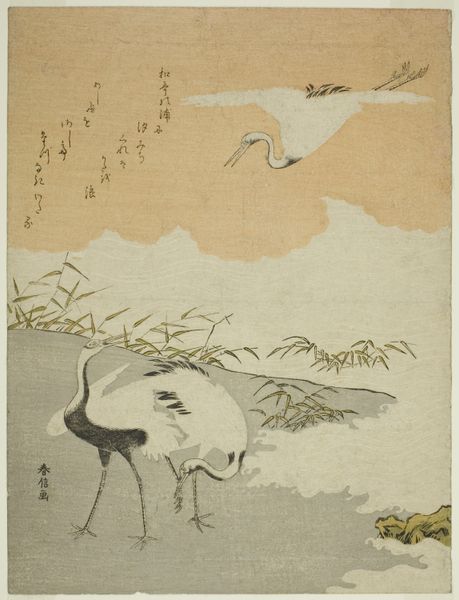
paper, ink
#
ink drawing
#
asian-art
#
paper
#
ink
#
24_meiji-period-1868-1912
#
pencil work
Dimensions: 13 1/2 x 10 7/8 in. (34.3 x 27.6 cm)
Copyright: Public Domain
Curator: Look at this delightful piece titled "Squirrel Eating Chestnuts," crafted between 1887 and 1892 by Kawabata Gyokushō. It's rendered in ink on paper. Editor: My immediate response is to this incredible stillness and soft grayscale; it projects a kind of zen calm despite the active subject matter. Curator: I think the quiet aesthetic belies some of the tumultuous times for Meiji-era artists. They were often caught between tradition and Western influence. Works such as this were perceived as distinctly and traditionally Japanese, aligning with national identity and resistance to Western modes of art-making. Editor: The squirrel, an intriguing choice of subject...Squirrels often represent thrift, provision, preparation for hard times. Is this meant as a commentary on societal conditions? Curator: Possibly. Chestnuts, too, hold layered meanings within Japanese culture – signifying autumn, harvest, abundance, but also longevity and resilience. We must not underestimate the significance of food sources at a time of considerable socio-political shift. It’s likely more than a simple depiction of nature. Editor: Thinking of those symbols through history: What did they represent before, and what did the artist think they mean now? Consider the rising industrialization and Western economic models introduced, could Gyokushō suggest something about adapting – gathering your resources, staying fed despite outside pressures? Curator: I'd argue that a core tenant of Meiji nationalism encouraged preserving "Japaneseness". Here, the symbolism intertwines, urging resilience and perseverance through the depiction of a small creature thriving through wit and adaptation. It is, after all, rendered in traditional ink drawing and in simple pencil work. Editor: It’s striking how potent such a minimal piece can be. A focused, resonant microcosm. Curator: It underscores how artworks of their time reflected political and societal debates. A reminder to look beyond pretty images and to look at works with social awareness.
Comments
No comments
Be the first to comment and join the conversation on the ultimate creative platform.
